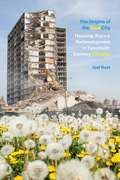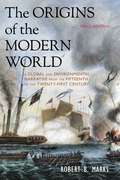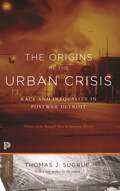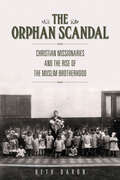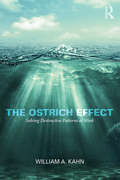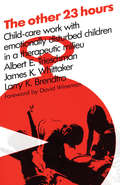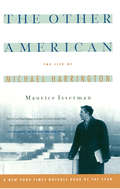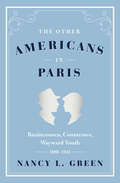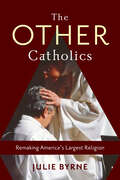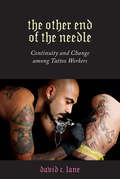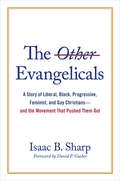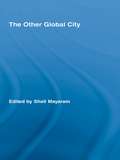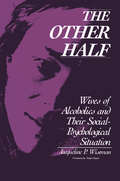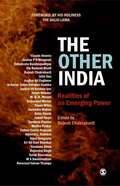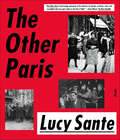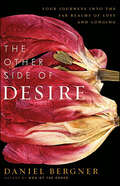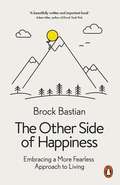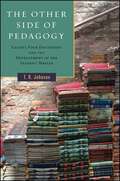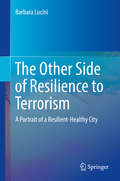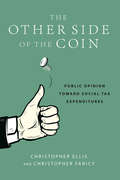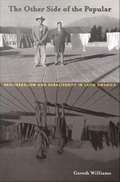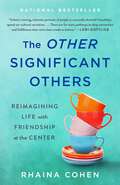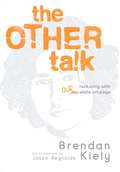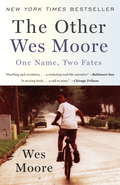- Table View
- List View
The Origins of the Dual City: Housing, Race, and Redevelopment in Twentieth-Century Chicago
by Joel RastChicago is celebrated for its rich diversity, but, even more than most US cities, it is also plagued by segregation and extreme inequality. More than ever, Chicago is a “dual city,” a condition taken for granted by many residents. In this book, Joel Rast reveals that today’s tacit acceptance of rising urban inequality is a marked departure from the past. For much of the twentieth century, a key goal for civic leaders was the total elimination of slums and blight. Yet over time, as anti-slum efforts faltered, leaders shifted the focus of their initiatives away from low-income areas and toward the upgrading of neighborhoods with greater economic promise. As misguided as postwar public housing and urban renewal programs were, they were born of a long-standing reformist impulse aimed at improving living conditions for people of all classes and colors across the city—something that can’t be said to be a true priority for many policymakers today. The Origins of the Dual City illuminates how we normalized and became resigned to living amid stark racial and economic divides.
The Origins of the Modern World: A Global and Environmental Narrative
by Robert B. MarksThis clearly written and engrossing book presents a global narrative of the origins of the modern world from 1400 to the present. Unlike most studies, which assume that the rise of the West is the story of the coming of the modern world, this history, drawing upon new scholarship on Asia, Africa, and the New World and upon the maturing field of environmental history, constructs a story in which those parts of the world play major roles, including their impacts on the environment. Robert B. Marks defines the modern world as one marked by industry, the nation state, interstate warfare, a large and growing gap between the wealthiest and poorest parts of the world, increasing inequality within the wealthiest industrialized countries, and an escape from the environmental constraints of the biological old regime. He explains its origins by emphasizing contingencies (such as the conquest of the New World); the broad comparability of the most advanced regions in China, India, and Europe; the reasons why England was able to escape from common ecological constraints facing all of those regions by the eighteenth century; a conjuncture of human and natural forces that solidified a gap between the industrialized and non-industrialized parts of the world; and the mounting environmental crisis that defines the modern world. Now in a new edition that brings the saga of the modern world to the present in an environmental context, the book considers how and why the United States emerged as a world power in the twentieth century and became the sole superpower by the twenty-first century, and why the changed relationship of humans to the environmental likely will be the hallmark of the modern era the Anthropocene. Once again arguing that the U. S. rise to global hegemon was contingent, not inevitable, Marks also points to the resurgence of Asia and the vastly changed relationship of humans to the environment that may in the long run overshadow any political and economic milestones of the past hundred years.
The Origins of the Urban Crisis: Race and Inequality in Postwar Detroit - Updated Edition (Princeton Classics #6)
by Thomas J. SugrueThe reasons behind Detroit’s persistent racialized poverty after World War IIOnce America's "arsenal of democracy," Detroit is now the symbol of the American urban crisis. In this reappraisal of America’s racial and economic inequalities, Thomas Sugrue asks why Detroit and other industrial cities have become the sites of persistent racialized poverty. He challenges the conventional wisdom that urban decline is the product of the social programs and racial fissures of the 1960s. Weaving together the history of workplaces, unions, civil rights groups, political organizations, and real estate agencies, Sugrue finds the roots of today’s urban poverty in a hidden history of racial violence, discrimination, and deindustrialization that reshaped the American urban landscape after World War II.This Princeton Classics edition includes a new preface by Sugrue, discussing the lasting impact of the postwar transformation on urban America and the chronic issues leading to Detroit’s bankruptcy.
The Orphan Scandal: Christian Missionaries and the Rise of the Muslim Brotherhood
by Beth BaronOn a sweltering June morning in 1933 a fifteen-year-old Muslim orphan girl refused to rise in a show of respect for her elders at her Christian missionary school in Port Said. Her intransigence led to a beating#151;and to the end of most foreign missions in Egypt#151;and contributed to the rise of Islamist organizations. Turkiyya Hasan left the Swedish Salaam Mission with scratches on her legs and a suitcase of evidence of missionary misdeeds. Her story hit a nerve among Egyptians, and news of the beating quickly spread through the country. Suspicion of missionary schools, hospitals, and homes increased, and a vehement anti-missionary movement swept the country. That missionaries had won few converts was immaterial to Egyptian observers: stories such as Turkiyya's showed that the threat to Muslims and Islam was real. This is a great story of unintended consequences: Christian missionaries came to Egypt to convert and provide social services for children. Their actions ultimately inspired the development of the Muslim Brotherhood and similar Islamist groups. In The Orphan Scandal, Beth Baron provides a new lens through which to view the rise of Islamic groups in Egypt. This fresh perspective offers a starting point to uncover hidden links between Islamic activists and a broad cadre of Protestant evangelicals. Exploring the historical aims of the Christian missions and the early efforts of the Muslim Brotherhood, Baron shows how the Muslim Brotherhood and like-minded Islamist associations developed alongside and in reaction to the influx of missionaries. Patterning their organization and social welfare projects on the early success of the Christian missions, the Brotherhood launched their own efforts to "save" children and provide for the orphaned, abandoned, and poor. In battling for Egypt's children, Islamic activists created a network of social welfare institutions and a template for social action across the country#151;the effects of which, we now know, would only gain power and influence across the country in the decades to come.
The Ostrich Effect: Solving Destructive Patterns at Work
by William A. KahnThe Ostrich Effect goes beyond the typical "how to" approach of most books that deal with difficult conversations at work. It aims to teach the reader what conversations to have, and when to have them, in order to solve destructive problems that occur in the workplace. Like the proverbial ostrich with its head in the sand, people often avoid confronting small issues at work, but, if avoided, these issues will escalate and inevitably wreak havoc. Drawing on a combination of social science research and Kahn’s practical experience as an organizational psychologist, the book examines the micro-processes that underlie the way in which these problems develop and flourish. These micro-processes are tiny, fleeting, and hardly noticeable, but when they are identified, something startling becomes apparent: there is a predictable pattern to this escalation. The book uses a variety of examples to demonstrate this pattern across a range of organizations and industries, and offers a toolkit to help guide the reader in resolving people problems at work. The toolkit focuses not on changing others, but on changing how we interact with others—our own behavior is the most powerful force for change that we have. The ostrich remains the symbol of those of us who foolishly ignore our problems while hoping that they will magically disappear. By identifying this "ostrich effect", the reader is empowered to re-frame and neutralize its impact.
The Other 23 Hours: Child Care Work with Emotionally Disturbed Children in a Therapeutic Milieu (Modern Applications Of Social Work Ser.)
by Larry BrendtroAmong other revolutionary developments of today's world is the so-called "knowledge explosion". So much is being written so fast about so many things that it is becoming well-nigh ir--retrievable. One consequently can never be sure that he knows what there is to know about many kinds of phenomena or types of problems existing in the modern world due to the chance that something exists in written form that simply cannot be found, so bulky is the load of literature. The common idea that only the sick child, and never the well, needs special emotional supports and helps from the adult is simply an error. For the well child is not immune from pile-ups of severe emotional intensity when overwhelmed by confusion and conflicts from within. Certainly, the normal kid can be ex--pected to handle such crises either from within or without better than his sick peer on the average, but that does not mean always; and the critical issue for the well child is: is he ready at the time they hit? If not, he needs, quite unmistakably, emotional first aid from the adult - parent, teacher, camp counsellor (or what have you) - who is in charge of his life at that moment. The reader will find that what the authors describe in The Other 23 Hours as the everyday requirement diet, as far as child handling is concerned for their disturbed children, is transferable to the normal crises of normal child--hood.
The Other American
by Maurice IssermanMost Americans first heard of Michael Harrington with the publication of The Other America, his seminal book on American poverty. Isserman expertly tracks Harrington's beginnings in the Catholic Worke
The Other Americans in Paris: Businessmen, Countesses, Wayward Youth, 1880–1941
by Nancy L. GreenA &“thorough and perceptive&” portrait of the not-so-famous expatriates of the City of Light (The Wall Street Journal). History may remember the American artists, writers, and musicians of the Left Bank best, but the reality is that there were many more American businessmen, socialites, manufacturers&’ representatives, and lawyers living on the other side of the River Seine. Be they newly minted American countesses married to foreigners with impressive titles or American soldiers who had settled in France after World War I with their French wives, they provide a new view of the notion of expatriates. Historian Nancy L. Green introduces us for the first time to a long-forgotten part of the American overseas population—predecessors to today&’s expats—while exploring the politics of citizenship and the business relationships, love lives, and wealth (or in some cases, poverty) of Americans who staked their claim to the City of Light. The Other Americans in Paris shows that elite migration is a part of migration, and that debates over Americanization have deep roots in the twentieth century.
The Other Catholics: Remaking America's Largest Religion
by Julie ByrneIndependent Catholics are not formally connected to the pope in Rome. They practice apostolic succession, seven sacraments, and devotion to the saints. But without a pope, they can change quickly and experiment freely, with some affirming communion for the divorced, women's ordination, clerical marriage, and same-sex marriage. From their early modern origins in the Netherlands to their contemporary proliferation in the United States, these "other Catholics" represent an unusually liberal, mobile, and creative version of America's largest religion.In The Other Catholics, Julie Byrne shares the remarkable history and current activity of independent Catholics, who number at least two hundred communities and a million members across the United States. She focuses in particular on the Church of Antioch, one of the first Catholic groups to ordain women in modern times. Through archival documents and interviews, Byrne tells the story of the unforgettable leaders and surprising influence of these understudied churches, which, when included in Catholic history, change the narrative arc and total shape of modern Catholicism. As Pope Francis fights to soften Roman doctrines with a pastoral touch and his fellow Roman bishops push back with equal passion, independent Catholics continue to leap ahead of Roman reform, keeping key Catholic traditions but adding a progressive difference.
The Other Catholics: Remaking America's Largest Religion
by Julie Byrne&“An excellent study of churches on the fringe that incubate new ideas and shed new light on mainstream religion.&”—Times Higher Education Independent Catholics are not formally connected to the pope in Rome. They practice apostolic succession, seven sacraments, and devotion to the saints. But without a pope, they can change quickly and experiment freely—with some affirming communion for the divorced, women&’s ordination, clerical marriage, and same-sex marriage. From their early modern origins in the Netherlands to their contemporary proliferation in the United States, these &“other Catholics&” represent an unusually liberal, mobile, and creative version of America&’s largest religion. In The Other Catholics, Julie Byrne shares the remarkable history and current activity of independent Catholics, who number at least two hundred communities and a million members across the United States. She focuses in particular on the Church of Antioch, one of the first Catholic groups to ordain women in modern times. Through archival documents and interviews, Byrne tells the story of the unforgettable leaders and surprising influence of these understudied churches, which, when included in Catholic history, change the narrative arc and total shape of modern Catholicism. As Pope Francis fights to soften Roman doctrines with a pastoral touch and his fellow Roman bishops push back with equal passion, independent Catholics continue to leap ahead of Roman reform, keeping key Catholic traditions but adding a progressive difference. &“Byrne&’s enlightening research and analysis will undoubtedly raise awareness of these little-known Catholic denominations.&”
The Other End of the Needle: Continuity and Change among Tattoo Workers (Inequality at Work: Perspectives on Race, Gender, Class, and Labor)
by David C. LaneThe Other End of the Needle demonstrates that tattooing is more complex than simply the tattoos that people wear. Using qualitative data and an accessible writing style, sociologist Dave Lane explains the complexity of tattoo work as a type of social activity. His central argument is that tattooing is a social world, where people must be socialized, manage a system of stratification, create spaces conducive for labor, develop sets of beliefs and values, struggle to retain control over their tools, and contend with changes that in turn affect their labor. Earlier research has examined tattoos and their meanings. Yet, Lane notes, prior research has focused almost exclusively on the tattoos—the outcome of an intricate social process—and have ignored the significance of tattoo workers themselves. "Tattooists," as Lane dubs them, make decisions, but they work within a social world that constrains and shapes the outcome of their labor—the tattoo. The goal of this book is to help readers understand the world of tattoo work as an intricate and nuanced form of work. Lane ultimately asks new questions about the social processes occurring prior to the tattoo’s existence.
The Other Evangelicals: A Story of Liberal, Black, Progressive, Feminist, and Gay Christians—and the Movement That Pushed Them Out
by Isaac B. SharpWhat&’s the first thing that comes to mind when you hear &“evangelical&”?For many, the answer is &“white,&” &“patriarchal,&” &“conservative,&” or &“fundamentalist&”—but as Isaac B. Sharp reveals, the &“big tent&” of evangelicalism has historically been much bigger than we&’ve been led to believe. In The Other Evangelicals, Sharp brings to light the stories of those twentieth-century evangelicals who didn&’t fit the mold, including Black, feminist, progressive, and gay Christians.Though the binary of fundamentalist evangelicals and modernist mainline Protestants is taken for granted today, Sharp demonstrates that fundamentalists and modernists battled over the title of &“evangelical&” in post–World War II America. In fact, many ideologies characteristic of evangelicalism today, such as &“biblical womanhood&” and political conservatism, arose only in reaction to the popularity of evangelical feminism and progressivism. Eventually, history was written by the &“winners&”—the Billy Grahams of American religion—while the &“losers&” were expelled from the movement via the establishment of institutions such as the National Association of Evangelicals.Carefully researched and deftly written, The Other Evangelicals offers a breath of fresh air for scholars seeking a more inclusive history of religion in America.
The Other Global City (Routledge Advances in Geography)
by Shail MayaramWhat is a Global City? Who authorizes the World Class City? This edited volume interrogates the "global cities" literature, which views the city as a shimmering, financial "global network." Through a historical-ethnographic exploration of inter-ethnic relations in the "other global" cities of Cairo, Beirut, Istanbul, Bukhara, Lhasa, Delhi, Singapore, Kuala Lumpur and Tokyo, the well-known contributors highlight cartographies of the Other Global City. The volume contends that thinking about the city in the longue duree and as part of a topography of interconnected regions contests both imperial and nationalist ways of reading cities that have occasioned the many and particularly violent territorial partitions in Asia and the world.
The Other Half: Wives of Alcoholics and Their Social-Psychological Situation
by Jacqueline WisemanThis current study has emerged from two decades of the author's investigations in related areas: alcoholism and domestic relations. Its canvas is broadly comparative, drawing on interviews and data gathered in the United States and Finland. The domestic drama of The Other Half is played out both in the private scene of the home and the more public scene of the workplace, and against these two differing national backgrounds. Despite the many expected and perceived cultural differences between the countries, the effects of alcoholism on the family are shown to be the same.Dr. Wiseman's study offers theoretical insights gleaned from its perspective on alcoholism as an interactive phenomenon,to which the concepts of G.H. Mead and Blumer can be applied to illuminate the carefully presented data and go beyond them. New terrain in studies of alcoholism is thereby explored, including such themes as the social construction by the subjects of their husbands' drinking, their marriage and their self-images; the strategy of coping mechanisms; and the effects of the crisis of alcoholism on gender, sex roles, and power differentials.The Other Half complements Dr. Wiseman's prize-winning work on the treatment of Skid Row alcoholics, Stations of the Lost, while involving issues of greater complexity on both the methodological and theoretical plane.
The Other India: Realities of an Emerging Power
by Rajesh ChakrabartiThis collection documents and analyzes, from different angles, the forces and trends that shape contemporary India′s socio-economic reality. The contributors comprise an eclectic group—spiritual leaders, grassroot activists, as well as eminent thinkers from diverse fields like the judiciary, social development, environment, education, contemporary science and art. In contrast to the dominant characterization of a "Shining India" in recent years, these articles present a complex and multi-dimensional reality, essential for a balanced, objective understanding of the issues that shape today′s India and indeed the world. The Other India: Realities of an Emerging Power focuses on an India far removed from a country of glass and steel high-rises and air-conditioned schools; glistening malls and multiplexes; and fashion shows, Bollywood and T20 cricket. It explores issues like poverty and social justice; the role of religion in society—from inspiring struggles for social justice to instigating terrorism—the dangers of mindless destruction of nature, violation of human rights and the role of social action. Here dispassionate analysis of history and contemporary forces alternate with straight-from-the-heart narratives of grassroot activists. Candid despair shares space with encouraging stories of collective action bringing about real change. This compilation will hold tremendous appeal for the general reader and will serve as an indispensable reference for policy-makers, academics and thinkers working in the fields of sociology, religion, environment, education, human rights, law and justice, development issues and politics. It is a must-read for anyone trying to get a holistic picture of contemporary India′s dynamic society and economy.
The Other Paris
by Lucy Sante“The Other Paris is both eulogy and paean to the matrixes of anarchy, creativity, crime, and serendipity that once gave shape to the City of Light.” —Anna Wiener, The New RepublicParis, the City of Light, the city of fine dining and seductive couture and intellectual hauteur, was until fairly recently always accompanied by its shadow: the city of the poor, the outcast, the criminal, the eccentric, the willfully nonconforming. In The Other Paris, Lucy Sante gives us a panoramic view of that second metropolis, which has nearly vanished but whose traces are in the bricks and stones of the contemporary city, in the culture of France itself, and, by extension, throughout the world. Drawing on testimony from a great range of witnesses—from Balzac and Hugo to assorted boulevardiers, rabble-rousers, and tramps—Sante, whose thorough research is matched only by the vividness of her narration, takes the reader on a whirlwind tour. Richly illustrated with more than three hundred images, The Other Paris scuttles through the knotted streets of pre-Haussmann Paris, through the improvised accommodations of the original bohemians, through the whorehouses and dance halls and hobo shelters of the old city.A lively survey of labor conditions, prostitution, drinking, crime, and popular entertainment, and of the reporters, réaliste singers, pamphleteers, and poets who chronicled their evolution, The Other Paris is a book meant to upend the story of the French capital, to reclaim the city from the bons vivants and the speculators, and to hold a light to the works and lives of those expunged from its center by the forces of profit.“A wonderfully rich book.” —Allan Massie, The Wall Street Journal
The Other Side of Desire: Four Journeys into the Far Realms of Lust and Longing
by Daniel Bergner“Riveting….Powerful…as much about desire and what’s normal as it is an exploration of why we are the way we are, whether we like it or not.” —New York Times Book ReviewSubtitled “Four Journeys into the Far Realms of Lust and Longing,” Daniel Bergner’s The Other Side of Desire is a literary exploration of science and sex that will appeal to readers of Mary Roach and Natalie Angier. A cross between “a top-rated HBO series [with] provocatively graphic sex, humorous dialogue, and moral ambiguity,” (New York Times) and a profound, deeply humanizing study of sexuality, The Other Side of Desire has been called, “a foray into extreme passion, in quest of the human soul” (O, The Oprah Magazine) and its author, Bergner, “a keen storyteller but above all a humane one” (Salon.com).
The Other Side of Happiness: Embracing a More Fearless Approach to Living
by Dr. Brock Bastian'Required reading ... Brock Bastian expertly picks apart the fundamental idea that humans thrive when they approach pleasure and avoid pain, explaining why hardship sometimes yields richer lives that are laden with meaning, deep social connections, and unexpected bliss' Adam Alter, author of Drunk Tank Pink In today's culture, happiness has become the new marker of success, while hardships are viewed as personal weaknesses, or problems to be fixed. We increasingly try to eradicate pain through medication and by insulating ourselves from risk and offence, despite being the safest generation to have ever lived. Yet in his research, renowned social psychologist Brock Bastian has found that suffering and sadness are neither antithetical to happiness nor incidental to it: they are a necessary ingredient for emotional well-being.Drawing on psychology, neuroscience and internationally acclaimed findings from Bastian's own lab, The Other Side of Happiness encourages us to take a more fearless approach to living. The most thrilling moments of our lives are often balanced on a knife edge between pleasure and pain, whether it is finding your true love, holding your new-born for the first time, finishing a marathon or even plunging into an icy sea. This is because pain and the threat of loss quite literally increase our capacity for happiness, as Bastian reveals, making us stronger, more resilient, more connected to other people and more attuned to what truly matters. Pain even makes us more mindful, since in our darkest moments we are especially focused and aware of the world around us. Our addiction to positivity and the pursuit of pleasure is actually making us miserable. Brock Bastian shows that, without some pain, we have no real way to achieve and appreciate the kind of happiness that is true and transcendent.
The Other Side of Pedagogy: Lacan's Four Discourses and the Development of the Student Writer (SUNY series, Transforming Subjects: Psychoanalysis, Culture, and Studies in Education)
by T. R. JohnsonUniversity classrooms are increasingly in crisis—though popular demands for accountability grow more insistent, no one seems to know what our teaching should seek to achieve. This book traces how we arrived at our current impasse, and it uses Lacan's theory of the four discourses to chart a path forward via an analysis of the freshman writing class. How did we forfeit a meaningful set of goals for our teaching? T. R. Johnson suggests that, by the 1960s, the work of Bergson and Piaget had led us to see student growth as a journey into more and more abstract thought, a journey that will happen naturally if the teacher knows how to stay out of the way. Since the 1960s, we've come to see development, in turn, only as a vague initiation into the academic community. This book, however, offers an alternative tradition, one rooted in Vygotsky and the feminist movement, that defines the developing student writer in terms of a complex, intersubjective ecology, and then, through these precedents, proposes a fully psychoanalytic model of student development. To illustrate his practical use of the four discourses, Johnson draws on a wide array of concepts and a colorful set of examples, including Franz Kafka, Keith Richards, David Foster Wallace, Hannah Arendt, and many others.
The Other Side of Resilience to Terrorism
by Barbara LuciniThis timely treatise introduces an innovative prevention/preparedness model for cities to address and counter terrorist threats and events. It offers theoretical background, mixed-method research, and tools for creating a resilience-based response to terrorism, as opposed to the security-based frameworks commonly in use worldwide. The extended example of Milan as a "resilient-healthy" city pinpoints sociological, political, and economic factors that contribute to terror risk, and outlines how law enforcement and emergency management professionals can adopt more proactive measures. From these observations and findings, the author also makes recommendations for the professional training and city planning sectors to address preparedness issues, and for community inclusion programs to deter criminal activities in at-risk youth. Features of the coverage: Summary of sociological theories of terrorism The Resilience D model for assessing and managing urban terrorist activity Findings on resilience and vulnerabilities of terror groups Photo-illustrated analysis of neighborhoods in Milan, describing areas of risk and resilience Virtual ethnography with perspectives from native residents, recent immigrants, and security experts Proposals for coordinated communications between resource agencies The Other Side of Resilience to Terrorism will hold considerable interest for students, stakeholders, practitioners, and researchers. It makes a worthwhile text for various academic disciplines (e. g. , urban sociology, crisis management) as well as for public agencies and policymakers.
The Other Side of the Coin: Public Opinion toward Social Tax Expenditures
by Christopher Ellis Christopher G. FaricyDespite high levels of inequality and wage stagnation over several decades, the United States has done relatively little to address these problems—at least in part due to public opinion, which remains highly influential in determining the size and scope of social welfare programs that provide direct benefits to retirees, unemployed workers or poor families. On the other hand, social tax expenditures—or tax subsidies that help citizens pay for expenses such as health insurance or the cost of college and invest in retirement plans—have been widely and successfully implemented, and they now comprise nearly 40 percent of the spending of the American social welfare state. In The Other Side of the Coin, political scientists Christopher Ellis and Christopher Faricy examine public opinion towards social tax expenditures—the other side of the American social welfare state—and their potential to expand support for such social investment. Tax expenditures seek to accomplish many of the goals of direct government expenditures, but they distribute money indirectly, through tax refunds or reductions in taxable income, rather than direct payments on goods and services or benefits. They tend to privilege market-based solutions to social problems such as employer-based tax subsidies for purchasing health insurance versus government-provided health insurance. Drawing on nationally representative surveys and survey experiments, Ellis and Faricy show that social welfare policies designed as tax expenditures, as opposed to direct spending on social welfare programs, are widely popular with the general public. Contrary to previous research suggesting that recipients of these subsidies are often unaware of indirect government aid—sometimes called “the hidden welfare state”—Ellis and Faricy find that citizens are well aware of them and act in their economic self-interest in supporting tax breaks for social welfare purposes. The authors find that many people view the beneficiaries of social tax expenditures to be more deserving of government aid than recipients of direct public social programs, indicating that how government benefits are delivered affects people’s views of recipients’ worthiness. Importantly, tax expenditures are more likely to appeal to citizens with anti-government attitudes, low levels of trust in government, or racial prejudices. As a result, social spending conducted through the tax code is likely to be far more popular than direct government spending on public programs that have the same goals. The first empirical examination of the broad popularity of tax expenditures, The Other Side of the Coin provides compelling insights into constructing a politically feasible—and potentially bipartisan—way to expand the scope of the American welfare state.
The Other Side of the Popular: Neoliberalism and Subalternity in Latin America
by Gareth WilliamsDrawing on deconstruction, postcolonial theory, cultural studies, and subaltern studies, The Other Side of the Popular is as much a reflection on the limitations and possibilities for thinking about the politics of Latin American culture as it is a study of the culture itself. Gareth Williams pays particular attention to the close relationship between complex cultural shifts and the development of the neoliberal nation-state. The modern Latin American nation, he argues, was built upon the idea of "the people," a citizenry with common interests transcending demographic and cultural differences. As nations have weakened in relation to the global economy, this moment--of the popular as the basis of nation-building--has passed, causing seismic shifts in the relationships between governments and cultural formations. Williams asserts that these changed relationships necessitate the rethinking of fundamental concepts such as "the popular" and "the nation. " He maintains that the perspective of subalternity is vital to this theoretical project because it demands the reimagining of the connections between critical reason and its objects of analysis. Williams develops his argument through studies of events highlighting Latin America's uneasy, and often violent, transition to late capitalism over the past thirty years. He looks at the Chiapas rebellion in Mexico, genocide in El Salvador, the Sendero in Peru, Chile's and Argentina's transitions to democratic governments, and Latin Americans' migration northward. Williams also reads film, photography, and literary works, including Ricardo Piglia's The Absent City and the statements of a young Salvadoran woman, the daughter of ex-guerrilleros, living in South Central Los Angeles. The Other Side of the Popular is an incisive interpretation of Latin American culture and politics over the last few decades as well as a thoughtful meditation on the state of Latin American cultural studies.
The Other Significant Others: Reimagining Life with Friendship at the Center
by Rhaina CohenNATIONAL BESTSELLERAN INDIE BESTSELLER"The Other Significant Others…fundamentally, it's become my new Bible.” — Trevor Noah"An arresting work of compassion and insight." ―Lori Gottlieb"I loved and recommend [The Other Significant Others] to everybody." —Ezra Klein "I feel like I've been waiting for this book for my entire adult life." ―Anne Helen PetersenWhy do we assume romantic relationships are more important than friendships? What do we lose when we expect a spouse to meet all our needs? And what can we learn about commitment, love, and family from people who put deep friendship at the center of their lives?In The Other Significant Others, NPR's Rhaina Cohen invites us into the lives of people who have defied convention by choosing a friend as a life partner—these are friends who are home co-owners, co-parents or each other’s caregivers. Their riveting stories unsettle widespread assumptions about relationships, including the idea that sex is a defining feature of partnership and that people who raise kids together should be in a romantic relationship. Platonic partners from different walks of life—spanning age and religion, gender and sexuality and more—reveal how freeing and challenging it can be to embrace a relationship model that society doesn't recognize. And they show that orienting your world around friends isn't limited to daydreams and episodes of The Golden Girls, but actually possible in real life.Based on years of original reporting and striking social science research, Cohen argues that we undermine romantic relationships by expecting too much of them, while we diminish friendships by expecting too little of them. She traces how, throughout history, our society hasn’t always fixated on marriage as the greatest source of meaning, or even love. At a time when many Americans are spending large stretches of their lives single, widowed or divorced, or feeling the effects of the "loneliness epidemic," Cohen insists that we recognize the many forms of profound connection that can anchor our lives. A rousing and incisive book, The Other Significant Others challenges us to ask what we want from our relationships—not just what we’re supposed to want—and transforms how we define a fulfilling life.
The Other Talk: Reckoning with Our White Privilege
by Brendan KielyAward-winning and New York Times bestselling author Brendan Kiely starts a conversation with white kids about race in this accessible introduction to white privilege and why allyship is so vital. Talking about racism can be hard, but... Most kids of color grow up talking about racism. They have &“The Talk&” with their families—the honest talk about survival in a racist world. But white kids don&’t. They&’re barely spoken to about race at all—and that needs to change. Because not talking about racism doesn&’t make it go away. Not talking about white privilege doesn&’t mean it doesn&’t exist. The Other Talk begins this much-needed conversation for white kids. In an instantly relatable and deeply honest account of his own life, Brendan Kiely offers young readers a way to understand one&’s own white privilege and why allyship is so vital, so that we can all start doing our part—today.
The Other Wes Moore: One Name, Two Fates
by Wes MooreThe chilling truth is that his story could have been mine. The tragedy is that my story could have been his.<P><P> Two kids named Wes Moore were born blocks apart within a year of each other. Both grew up fatherless in similar Baltimore neighborhoods and had difficult childhoods; both hung out on street corners with their crews; both ran into trouble with the police. How, then, did one grow up to be a Rhodes Scholar, decorated veteran, White House Fellow, and business leader, while the other ended up a convicted murderer serving a life sentence? Wes Moore, the author of this fascinating book, sets out to answer this profound question. In alternating narratives that take readers from heart-wrenching losses to moments of surprising redemption, The Other Wes Moore tells the story of a generation of boys trying to find their way in a hostile world.<P> BONUS: This edition contains a new afterword and a The Other Wes Moore discussion guide.
